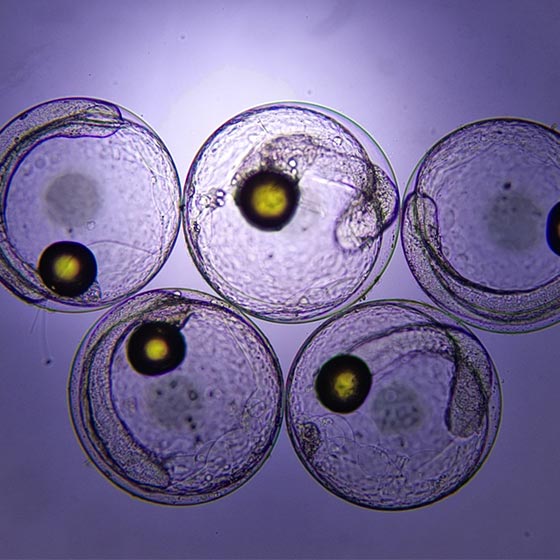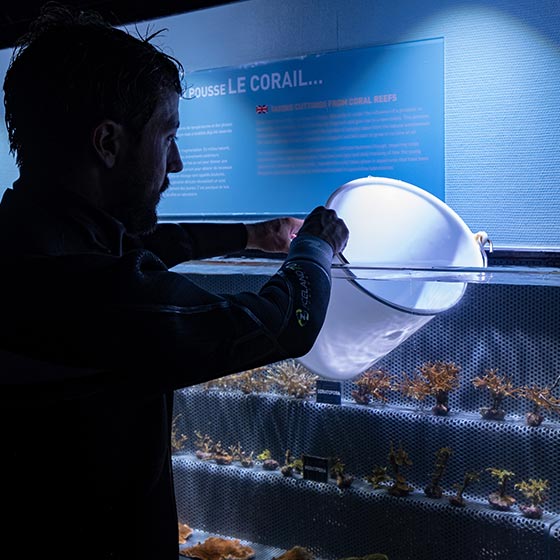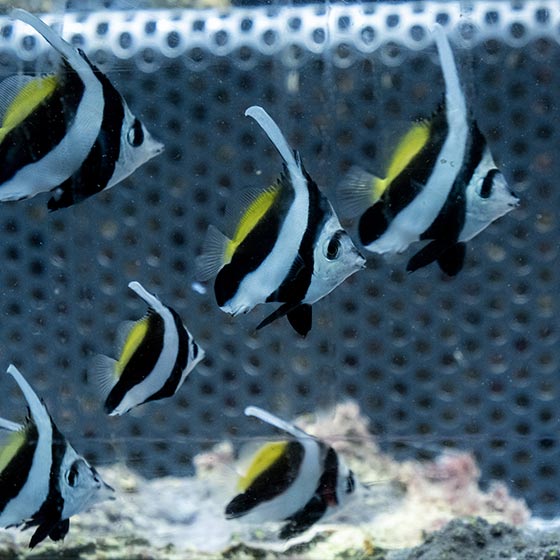A long and meticulous process
The Aquarium’s biologists have been working for several years on the larval rearing of numerous underwater species. Recently, their mastery of phytoplankton and zooplankton production has opened up the field of possibilities. In addition to the species for which they have mastered the pattern, biologists and divers are now focusing on fish for which there is a lack of scientific publications. Thus, the Aquarium’s experts are writing and implementing new protocols from behind the scenes. The first step is to collect fertilised eggs from the tanks. These eggs, which are less than one millimetre in diameter, are then isolated.




